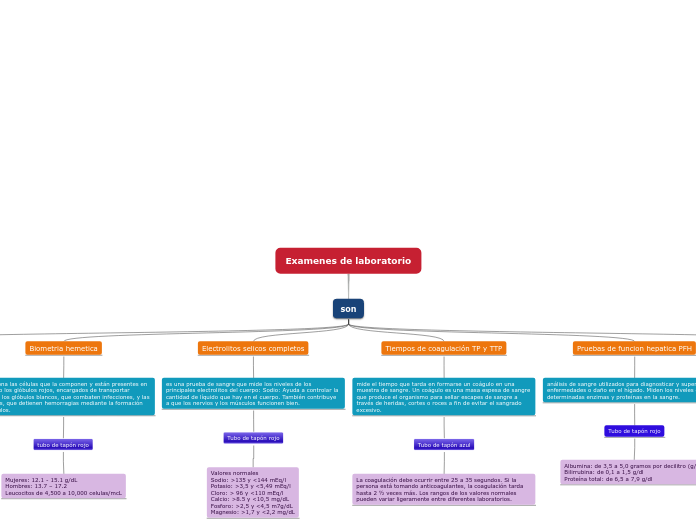por Cristo Rodriguez hace 4 años
560
Examenes de laboratorio

por Cristo Rodriguez hace 4 años
560

Ver más
Type in the name of the multiple-perspectives text.
Example: Bridge to Terabithia by Katherine Paterson
Identify an important issue from the text that is being presented from different angles. Type it in.
Example: Jesse's drawing talent.
Albumina: de 3,5 a 5,0 gramos por decilitro (g/dl) Bilirrubina: de 0,1 a 1,5 g/dl Proteína total: de 6,5 a 7,9 g/dl
Decide on the fourth point of view
Type in the name of the last character whose perspective on the issue you are going to present.
Example: Leslie Burke, Jesse's new next-door neighbor, and best friend.
Point of view
Type in a relevant quote that highlights the character's point of view. Try to follow a citation format: author's name, chapter, and page.
Example: I can't get the poetry of the trees,' he said. She nodded. Don't worry,' she said. You will someday. He believed her.' (Paterson, 4. 24)
Tubo de tapón azul
How is the viewpoint introduced in the story?
Choose an answer:
La coagulación debe ocurrir entre 25 a 35 segundos. Si la persona está tomando anticoagulantes, la coagulación tarda hasta 2 ½ veces más. Los rangos de los valores normales pueden variar ligeramente entre diferentes laboratorios.
Whose character does the third point of view belong to?
Type in his/her name.
Example: Mr. Aarons, Jesse's father.
What does the character think, say or do that suggests their perspective on the issue?
Type in a quote and try to maintain the citation format.
Example: 'He would like to show his drawings to his dad, but he didn't dare. (...) He'd thought his dad would be pleased. He wasn't. What are they teaching in that damn school? he had asked.' (Paterson, 2.8)
Tubo de tapón rojo
What kind of narration introduces the viewpoint?
Choose an answer:
Valores normales Sodio: >135 y <144 mEq/l Potasio: >3,5 y <5,49 mEq/l Cloro: > 96 y <110 mEq/l Calcio: >8.5 y <10,5 mg/dL Fosforo: >2,5 y <4,5 m7g/dL Magnesio: >1,7 y <2,2 mg/dL
Decide on the second point of view
Name the character (it can either be the main character or one of the supporting characters) whose point of view you are presenting.
Example: Miss Edmunds, Jesse's music teacher.
Type in a quote that points out the character's position about the issue.
Try to follow a citation format: author's name, chapter, and page.
Example: 'She said he was unusually talented, and she hoped he wouldn't let anything discourage him.' (Paterson, 2. 8)
tubo de tapón rojo
How is the viewpoint introduced in the story?
Choose an answer:
Mujeres: 12.1 - 15.1 g/dL Hombres: 13.7 – 17.2 Leucocitos de 4,500 a 10,000 celulas/mcL
Decide on the first point of view you are going to present.
Type in the name of the character (it can either be the main character or one of the supporting characters) whose point of view belongs to.
Example: Jesse Oliver Aarons, Jr., the main character of the novel, a fifth-grader living in a rural Southern area.
Type in a relevant quote that highlights the character's point of view towards
son.
Try following a citation format: author's name, chapter, and page.
Example: 'Jesse drew the way some people drank whiskey. (...) Lord, he loved to draw. (...) When he was in first grade, he told his father that he wanted to be an artist when he grew up.' (Paterson, 2. 7)
Tubo de tapón lila
What type of narration introduces the viewpoint?
Choose an answer:
Creatinina: 0.6 a 1.4mg/dL (de 53 a 114.9 mol/L) Glucosa: 80 a 100 mg/dL (de 3.9 a 5.6 mmol/L) Potasio: 3.7 a 5.2 mEq/L (de 3.70 a 5.20 mmol/L) Sodio: 135 a 145 mEq/L (de 135 a 145 mmol/L)